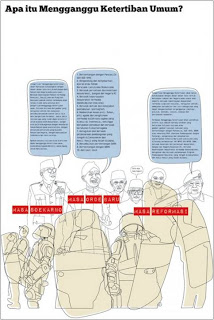
Kimberly Twarog: Gendering Trauma Recovery in Aceh, 1976-2010
Kimberly Twarog’s lecture focused on performance and dance as a way to address the trauma the Acehnese faced during the conflict and the 2004 Indian Ocean Tsunami. Specifically, she looked at the gender trauma that women in Aceh endured, including sexual violence and torture as hostages. The women were less outspoken about abuse than men, largely due to the stigma and lack of witness protection for victims of sexual violence. Ms. Twarog also commented that sexual violence occurred not only due to the conflict, but also when people were forced to tent camps after the Tsunami. Furthermore, the introduction of Sharia Law in Aceh allowed authorities to persecute women based on their appearance, reduced their participation in the government (despite a thirty percent quota), and generally marginalized women in Acehnese society.
From this framework, Ms. Twarog discussed the different performance and trauma recovery programs by international NGOs, local NGOs, and individual artists. First, she examined the UNESCO Rise Above the Tide Program (RAT) that taught music and dance to children to allow them to share their traumatic experiences. While she commended their use of local traditions, she noted their program lacked longevity (only six months), the program only discussed the tsunami and not the conflict, and the teachers and most of the students were male. Next, she looked at two local NGOs, Taloe and Tikar Pandan, that used traditional performing arts to discuss the conflict and tsunami. These local programs lacked funding, used largely male performers, and few girls participated; however, they did address both the tsunami and the conflict, the programs lasted longer than UNESCO, and Tikar opened up programs to the whole community. Finally, Ms. Twarog looked at one individual performer, known as PM TOH, who performs about events in Aceh and around the world. He created a safe space away from the violence to allow everyone, including women, to express themselves and relieve some of the burdens in their lives. She noted that while women can participate in performances, they are often reluctant because they face criticism.
Ms. Twarog concluded with a few recommendations looking forward including: more female staff and performers, more inclusive activities (adults as well as children), efforts to develop and sustain arts in education in Aceh, and greater attention to gender trauma and identity.














